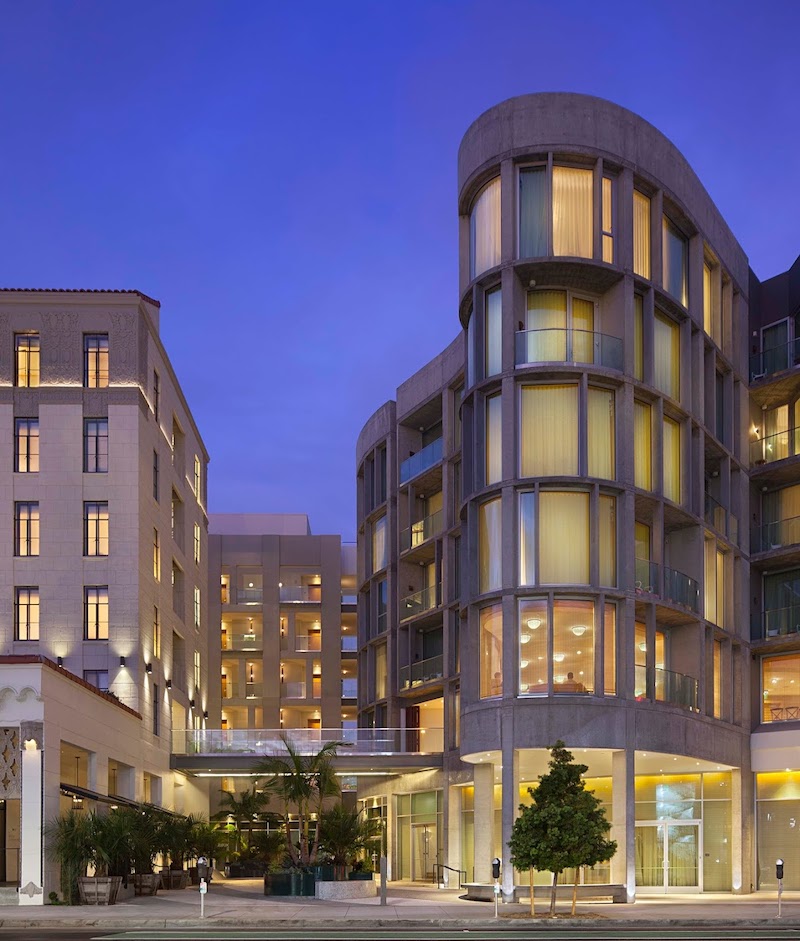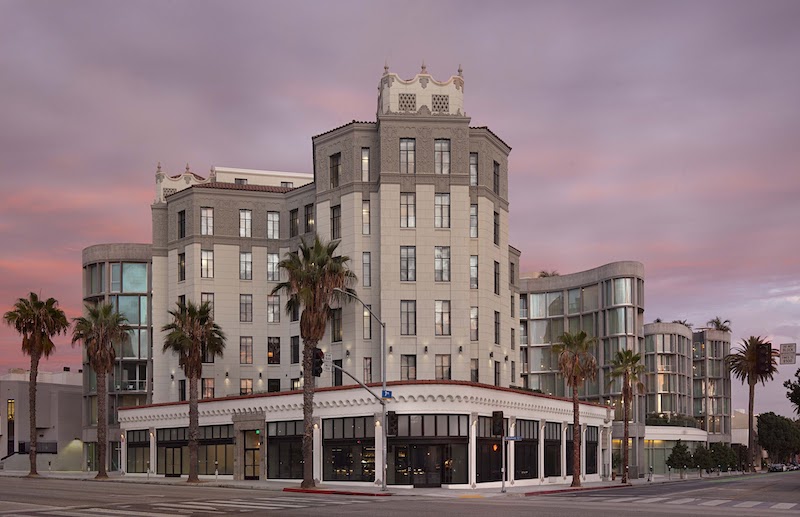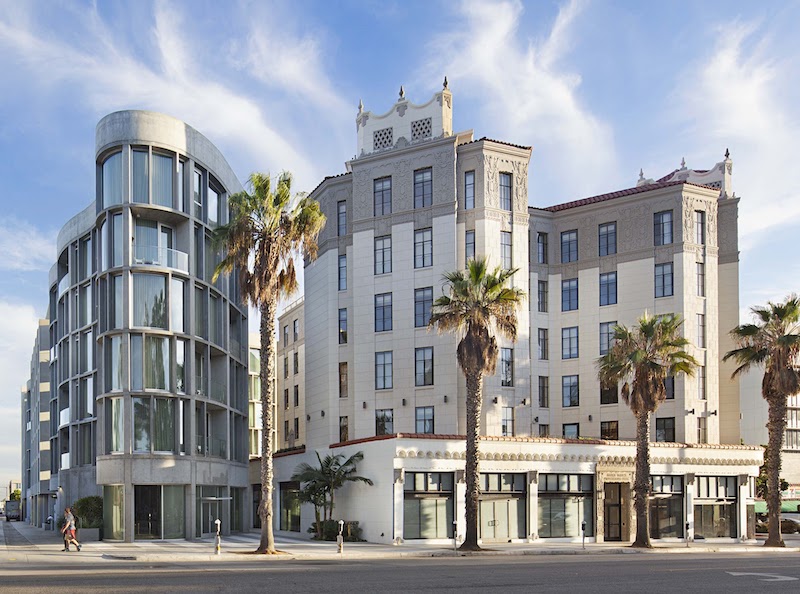The former Santa Monica Professional Building, originally built in 1928, has been converted into the Santa Monica Proper Hotel by Howard Lake Architects (HLA).
The city landmark was converted into 55 rooms for the hotel complex. A newly designed seven-story addition, which includes 216 rooms, is linked to the landmark building with a bridge. The ground floor is activated with retail, restaurants, and landscaped paseo, all open to the public.

HLA’s design approach was to contrast the original building’s elegant Spanish Colonial Revival architecture with a free-form new building designed that avoids direct visual competition between the structures. The addition’s curving plan and walls drape around the historic building. The curved wings of the new building angle to harmonize with the 1928 building’s Y-shaped plan, while also contrasting to the faceted, angular shape of the historic building.
Additional team members include Chattel, Inc. (preservation architect), Elysian Landscapes (landscape designer), Kelly Wearstler (interiors), HLB Lighting Design (lighting consultant), Morley Builders (general contractor), Saiful Bouquet Structural Engineers (new building structural engineer), Structural Focus (landmark building structural engineer), KPFF Consulting Engineers (civil engineers), Donald F. Dickerson Associates (MEP engineer), and GAIA (LEED consultant).

Related Stories
| Nov 18, 2013
6 checkpoints when designing a pediatric healthcare unit
As more time and money is devoted to neonatal and pediatric research, evidence-based design is playing an increasingly crucial role in the development of healthcare facilities for children. Here are six important factors AEC firms should consider when designing pediatric healthcare facilities.
| Nov 15, 2013
Greenbuild 2013 Report - BD+C Exclusive
The BD+C editorial team brings you this special report on the latest green building trends across nine key market sectors.
| Nov 15, 2013
Pedia-Pod: A state-of-the-art pediatric building module
This demonstration pediatric treatment building module is “kid-friendly,” offering a unique and cheerful environment where a child can feel most comfortable.
| Nov 13, 2013
Installed capacity of geothermal heat pumps to grow by 150% by 2020, says study
The worldwide installed capacity of GHP systems will reach 127.4 gigawatts-thermal over the next seven years, growth of nearly 150%, according to a recent report from Navigant Research.
| Nov 8, 2013
Oversized healthcare: How did we get here and how do we right-size?
Healthcare facilities, especially our nation's hospitals, have steadily become larger over the past couple of decades. The growth has occurred despite stabilization, and in some markets, a decline in inpatient utilization.
| Nov 6, 2013
Green hotel trends: Industry expands its sustainability focus beyond laundry
There’s more to creating a sustainable hotel than saving water and power by asking guests to reuse their towels.
| Oct 30, 2013
15 stellar historic preservation, adaptive reuse, and renovation projects
The winners of the 2013 Reconstruction Awards showcase the best work of distinguished Building Teams, encompassing historic preservation, adaptive reuse, and renovations and additions.
| Oct 30, 2013
11 hot BIM/VDC topics for 2013
If you like to geek out on building information modeling and virtual design and construction, you should enjoy this overview of the top BIM/VDC topics.
| Oct 28, 2013
Urban growth doesn’t have to destroy nature—it can work with it
Our collective desire to live in cities has never been stronger. According to the World Health Organization, 60% of the world’s population will live in a city by 2030. As urban populations swell, what people demand from their cities is evolving.
| Oct 18, 2013
Researchers discover tension-fusing properties of metal
When a group of MIT researchers recently discovered that stress can cause metal alloy to fuse rather than break apart, they assumed it must be a mistake. It wasn't. The surprising finding could lead to self-healing materials that repair early damage before it has a chance to spread.

















